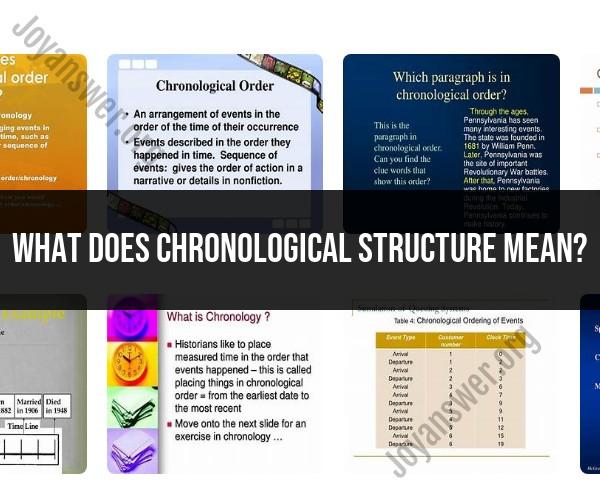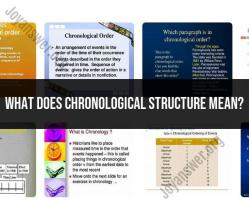What does chronological structure mean?
Chronological structure, in the context of writing and storytelling, refers to the organization of events, actions, or information in a sequence according to the order in which they occurred in time. It presents events in a linear fashion, following a timeline or chronological order, from the beginning to the end. This structure is commonly used to convey a sense of order and coherence when narrating events or providing information.
Key characteristics of a chronological structure in writing include:
Sequential Order: Events are presented in the order they happened, without jumping back and forth in time. Readers can easily follow the progression of events.
Time-Based Transitions: Transitional words and phrases like "first," "next," "then," "afterward," "finally," and "in the meantime" are often used to signal the chronological progression from one event to the next.
Clear Timeline: A clear timeline or timeline markers help readers understand when each event occurred relative to others, allowing them to create a mental map of the sequence.
Historical Accounts: This structure is commonly used in historical narratives, autobiographies, biographies, news reports, and any writing where the chronological order of events is essential to understanding the story or information.
Cause-and-Effect: A chronological structure can also help establish cause-and-effect relationships by showing how earlier events led to later ones.
Chronological structure is effective for providing a clear and coherent account of events, which is particularly useful when you want to convey a sense of progression, development, or history. It allows readers to follow a logical sequence and gain a deeper understanding of the subject matter. However, not all types of writing use a chronological structure; some may employ other organizational methods, such as spatial structure, thematic structure, or a combination of these, depending on the writer's goals and the nature of the content.


